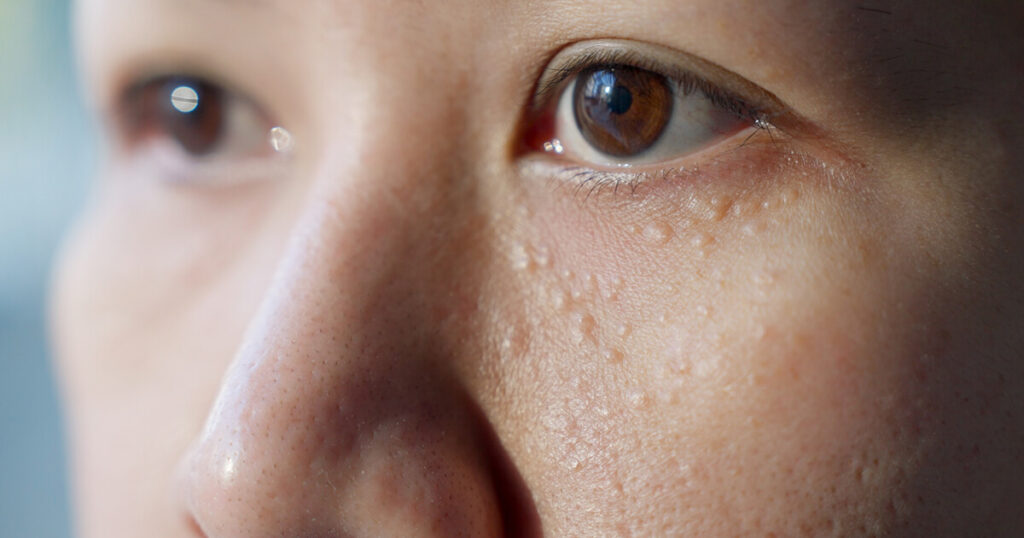Milia, those tiny white bumps that appear on the skin, are a common concern for many people. They form when dead skin cells get trapped beneath the surface of the skin instead of naturally shedding away. This often leads to the development of small, hard cysts. Many factors contribute to this process, including skin damage from sun exposure, injuries, or long-term use of steroid medications.
Though they may resemble acne, milia are quite distinct. They contain keratin, a protein that can sometimes be trapped under the skin, causing these noticeable but harmless bumps. Genetic predispositions and certain autoimmune conditions can also be contributing factors. The appearance of these bumps can be disconcerting, but understanding their nature can guide individuals in seeking appropriate treatment if necessary.
Milia can develop in anyone at any age, but they are especially prevalent in newborns. While they usually resolve on their own without medical intervention, treatments are available for persistent cases. Knowing the underlying causes helps in managing and preventing future occurrences. If interested, many treatments and preventive measures are discussed that provide deeper insight into handling this skin condition effectively.
Definition of Milia
Milia are small, white bumps that form on the skin when keratin becomes trapped beneath the surface. They are quite common among infants but can also appear in individuals of any age. These bumps are harmless and typically do not require treatment unless they become bothersome.
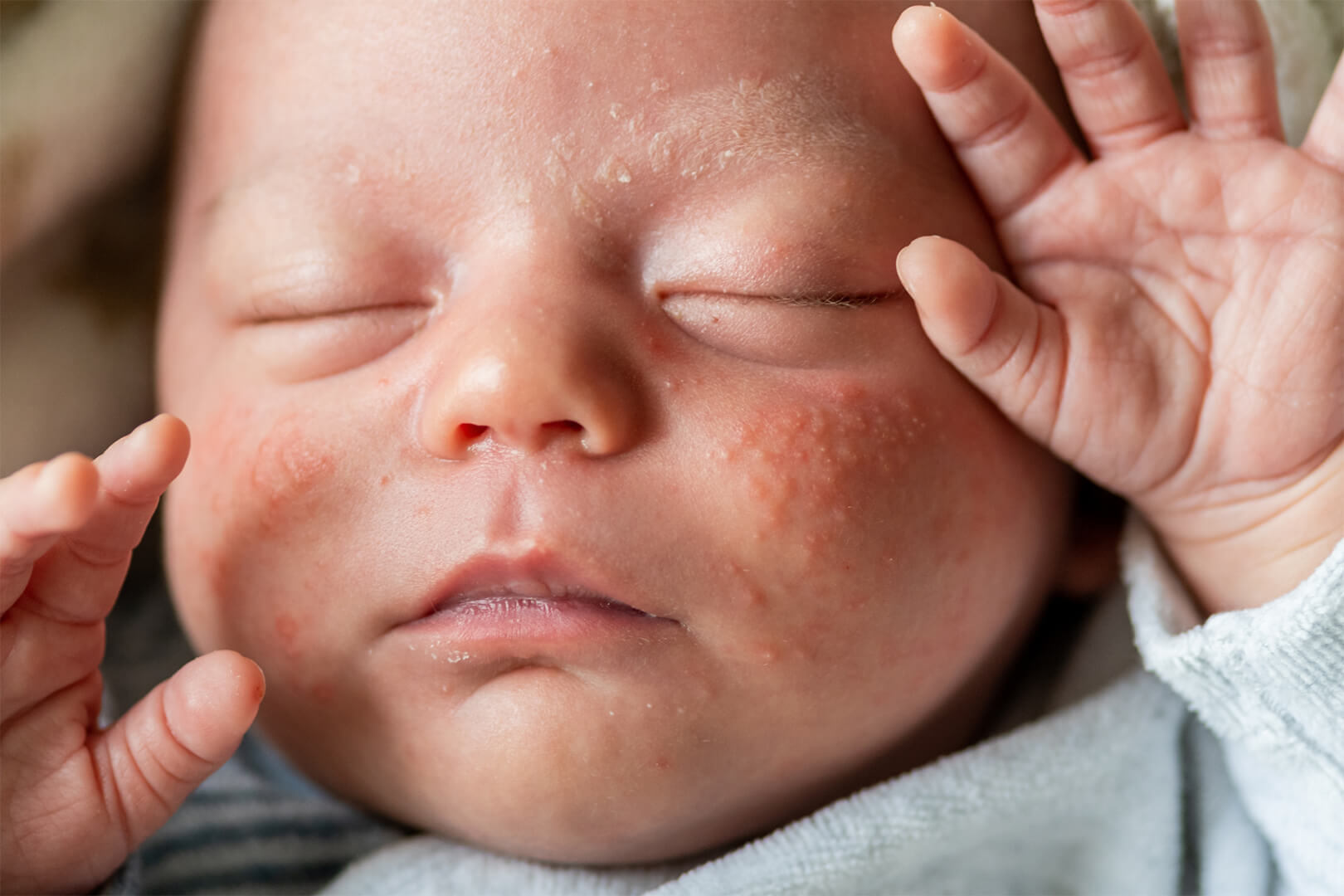
Classification of Milia
Milia can be classified into several types, primarily based on the age group affected and the underlying causes. Neonatal milia, often seen in newborns, usually develop on the face and resolve spontaneously within a few weeks.
Primary milia can occur in children and adults, appearing on the eyelids, cheeks, or forehead. These are typically persistent but may disappear over time. Secondary milia develop as a result of skin injury, burns, or blistering conditions.
Each type of milia has distinct features that may influence how or whether it needs to be addressed. Proper skin care routines and protection, such as regular cleansing and the use of sunscreen, can assist in managing and potentially preventing milia.
Skin Anatomy and Milia Formation
Milia form when keratin, a skin protein, gets trapped under the skin, leading to small cysts. Understanding the skin’s structure, particularly the stratum corneum and the keratinization process, sheds light on how these bumps develop.

The Role of the Stratum Corneum
The stratum corneum is the outermost layer of the epidermis, primarily composed of dead skin cells. It acts as a barrier between the body and the environment, providing protection and retaining moisture. Its structure can significantly affect the formation of milia, as its buildup can prevent skin from shedding naturally. This layer can become overly thick or damaged due to factors like sun exposure, improper exfoliation, or skincare products. When this layer impedes the natural exfoliation process, dead skin cells and keratin may get trapped beneath the surface, leading to the formation of milia.
Keratinization Process
Keratinization is the process where skin cells move from the lower layers to the skin’s surface, becoming more compact and filled with keratin. This protein is crucial for forming the skin’s protective barrier. Issues can arise during this process, as an overproduction of keratin or changes in skin turnover can contribute to milia development. Genetic factors, aging, and environmental elements like UV exposure can disrupt or accelerate keratinization. When keratin accumulates below the skin without being shed properly, it forms small cysts and results in the characteristic white bumps seen in milia. Proper skincare routines aim to regulate this process, helping prevent or reduce milia appearance.
Common Causes of Milia
Milia are small, white cysts that form on the skin due to various factors. While they are most commonly found in newborns, adults can also develop these tiny bumps. Understanding the underlying causes is crucial for prevention and treatment. Below, the role of sun damage, skin trauma, and the use of comedogenic products are explored in detail.
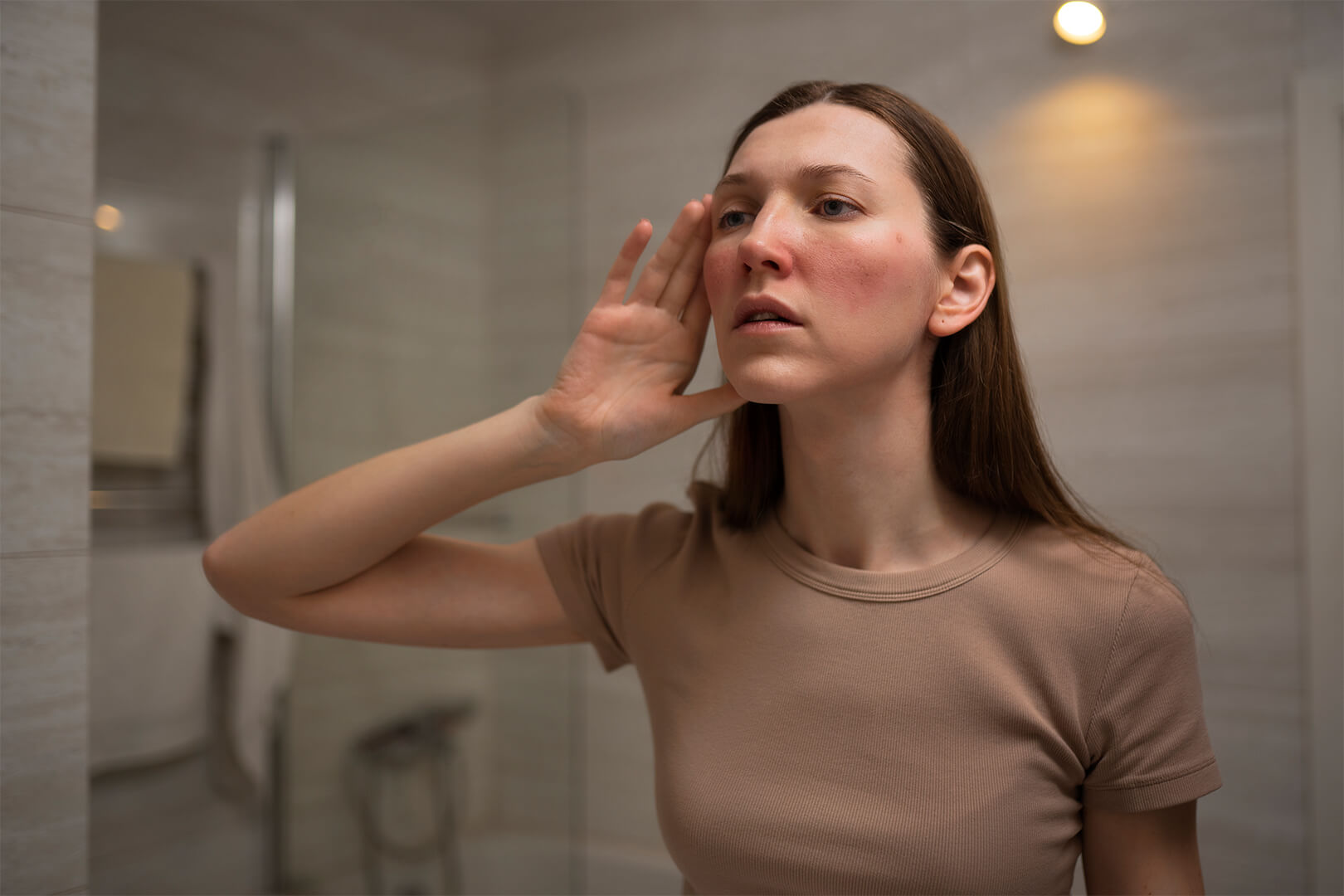
Sun Damage
Exposure to the sun can be a significant factor in the development of milia. UV rays damage the skin and may lead to changes in skin texture and cell turnover. Over time, this damage can cause skin cells to become trapped beneath the surface, forming milia.
Regular use of sunscreen helps protect against these effects. Protective clothing and sunglasses also reduce UV exposure significantly. It’s crucial to maintain hydration and use products with antioxidants to support skin repair and minimize sun-related damage.
Skin Trauma
Skin trauma, such as burns or blistering, can lead to the formation of milia. When the skin experiences injury, the healing process might trap skin cells under the surface. This trapped keratin then forms milia cysts.
Maintaining proper wound care and avoiding unnecessary friction can reduce the risk of trauma-induced milia. Gentle skincare products that do not irritate or further damage the skin may also be beneficial. Consulting a dermatologist for persistent skin issues is advised to prevent and address milia formation.
Use of Comedogenic Products
Comedogenic skincare or cosmetic products can contribute to milia. These products block pores, which can trap dead skin cells underneath the skin, leading to milia development. It’s important to choose products labeled as non-comedogenic to avoid this problem.
Regularly cleaning makeup brushes and removing makeup thoroughly at the end of the day can help prevent clogged pores. Additionally, opting for oil-free moisturizers and selecting lightweight serums with ingredients like salicylic acid may help maintain clear skin. An appropriate skincare routine, tailored to one’s skin type, plays a key role in preventing milia related to product use.
Milia in Different Age Groups
Milia affect both infants and adults, appearing under different circumstances and requiring variations in care. While neonatal milia are very common, adults can experience milia due to skin damage or other factors.

Neonatal Milia
Neonatal milia are prevalent in up to 40% to 50% of full-term newborns. These small, white cysts are typically found on the face, particularly the nose and cheeks. They are caused by skin flakes trapped in small pockets near the skin surface. Unlike in older individuals, neonatal milia generally resolve on their own within a few weeks and do not require medical intervention.
It is important for caregivers to note that attempts to treat or remove neonatal milia are unnecessary and might irritate sensitive skin. Parents should avoid any abrasive products on their newborns, as this can exacerbate skin irritation. Typically, gentle cleansing with water suffices, and milia should clear up naturally without leaving scars or lasting skin issues.
Milia in Adults
In adults, milia can occur due to a variety of reasons, including skin trauma, burns, or prolonged sun exposure. They can also be linked to certain skin conditions or the use of heavy creams and oils. Adult milia appear as small, white bumps similar to those seen in infants but may require different approaches for removal.
While milia in adults might go away naturally, persistent cases can benefit from exfoliation or treatments, such as retinoid creams. Professional medical advice is recommended before pursuing these treatments, as skin types and sensitivities vary. Additionally, milia en plaque, which can be associated with autoimmune conditions, should be treated under the supervision of a dermatologist to determine the safest and most effective approach.
Lifestyle Factors and Milia Development
Lifestyle choices play a significant role in the development of milia. Dietary habits and cosmetic practices can greatly influence the likelihood of forming these small white bumps on the skin.
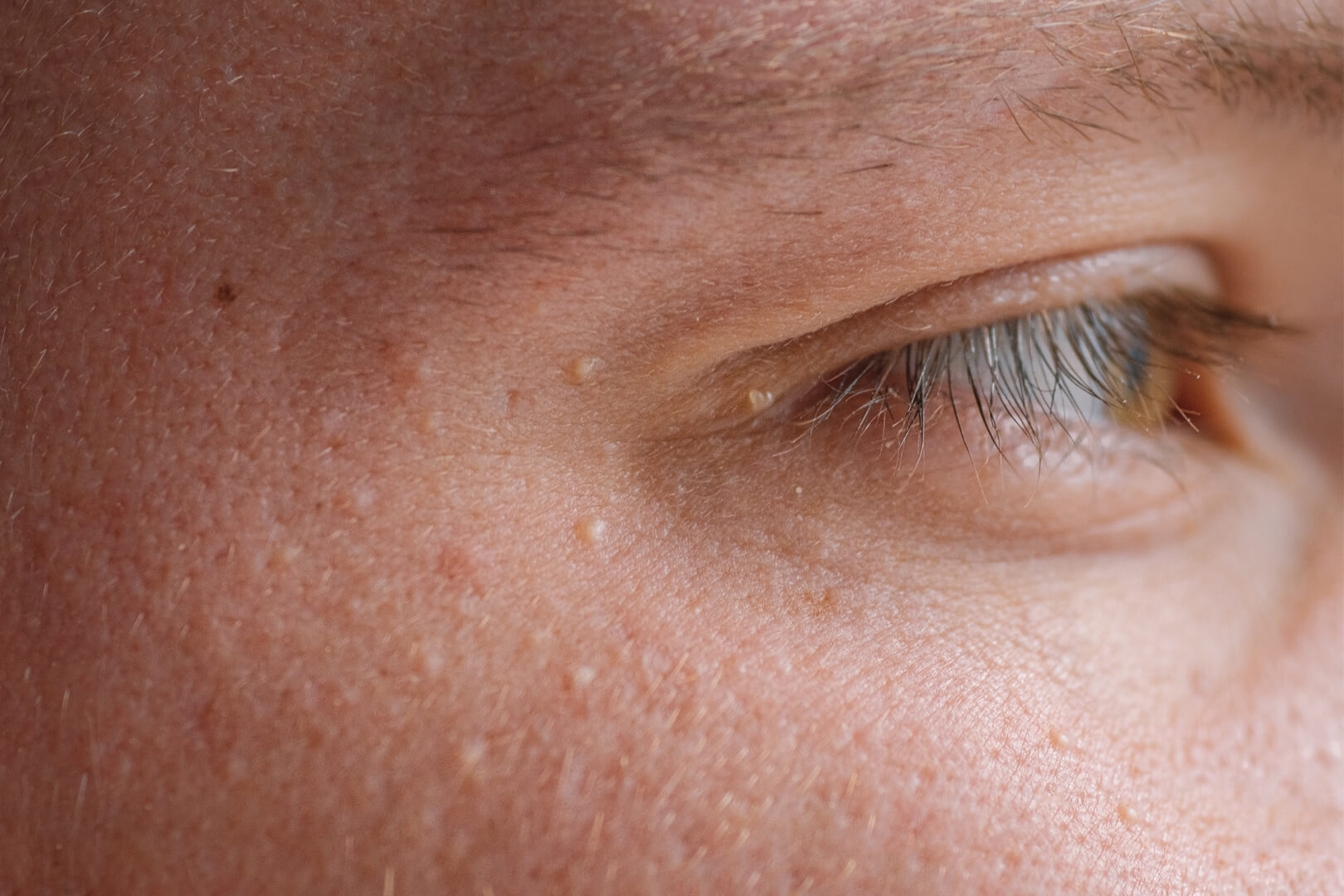
Dietary Influences
A balanced diet contributes to healthy skin, but certain dietary factors may increase the risk of milia development. Diets high in dairy and saturated fats can lead to excessive oil production, potentially clogging pores. Consuming processed foods high in sugar may also exacerbate skin conditions, including milia, as they can affect hormonal levels and skin cell turnover.
Hydration is another key element. Maintaining proper hydration helps the skin function correctly, minimizing the risk of dead skin cells becoming trapped. Foods rich in vitamins and antioxidants, such as fruits and vegetables, can support overall skin health. Including foods high in omega-3 fatty acids, like salmon and walnuts, can reduce inflammation, potentially lowering the occurrence of milia.
Cosmetic Practices
Cosmetic practices significantly impact milia formation. Using heavy, oil-based products may block skin pores, leading to the development of milia. Individuals should opt for non-comedogenic cosmetics, which are specifically designed to not block pores.
Exfoliation is crucial, as it assists in removing dead skin cells that can accumulate and block pores. Gentle exfoliation with appropriate products two to three times a week is recommended. Additionally, consistent use of sunscreen with at least SPF 30 is advised to protect the skin from sun damage, which can exacerbate milia. Regularly cleansing the skin to remove makeup and impurities can also reduce milia occurrence by promoting clear, healthy pores.
Dermatological Conditions Associated with Milia
Certain dermatological conditions can influence the formation of milia. These include rosacea and specific blistering skin conditions. Understanding these associations can assist in better management and treatment opportunities for affected individuals.
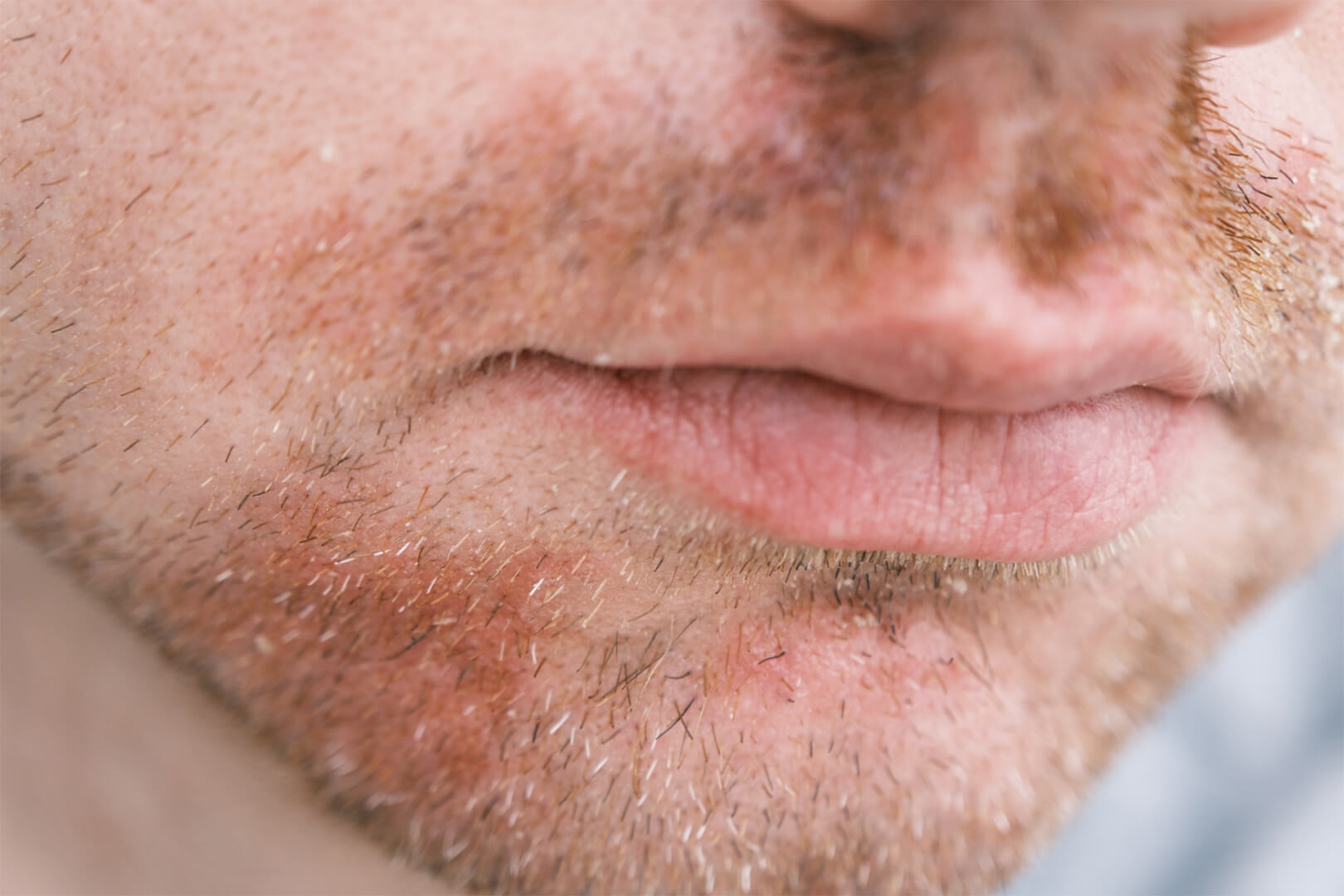
Rosacea
Rosacea, a chronic inflammatory skin condition, may increase susceptibility to milia. Characterized by redness, visible blood vessels, and sometimes acne-like breakouts, rosacea affects the skin’s barrier function. This compromised barrier might contribute to the trapping of dead skin cells beneath the surface, leading to the development of milia.
In cases where rosacea coexists with milia, treatment protocols often require adjustments. This may involve tailored skin care routines to address both conditions simultaneously, reducing inflammation and promoting healthier skin turnover.
Blistering Skin Conditions
Blistering skin conditions, such as epidermolysis bullosa and porphyria cutanea tarda, can be linked with milia. These conditions cause the skin to blister easily and damage the skin’s integrity, which may play a role in milia formation.
In individuals with these conditions, milia often occur in areas where the skin is most fragile or damaged. Treatment may involve careful wound care and targeted solutions to minimize further skin trauma, thereby reducing the likelihood of milia developing in these sensitive areas. Attention to gentle skincare products and procedures is crucial for these patients.
Prevention Strategies for Milia
Adopting the right skin care practices and protecting oneself from sun exposure are crucial in preventing milia. Paying attention to these areas can help maintain clear, healthy skin and reduce the likelihood of these small cysts forming.
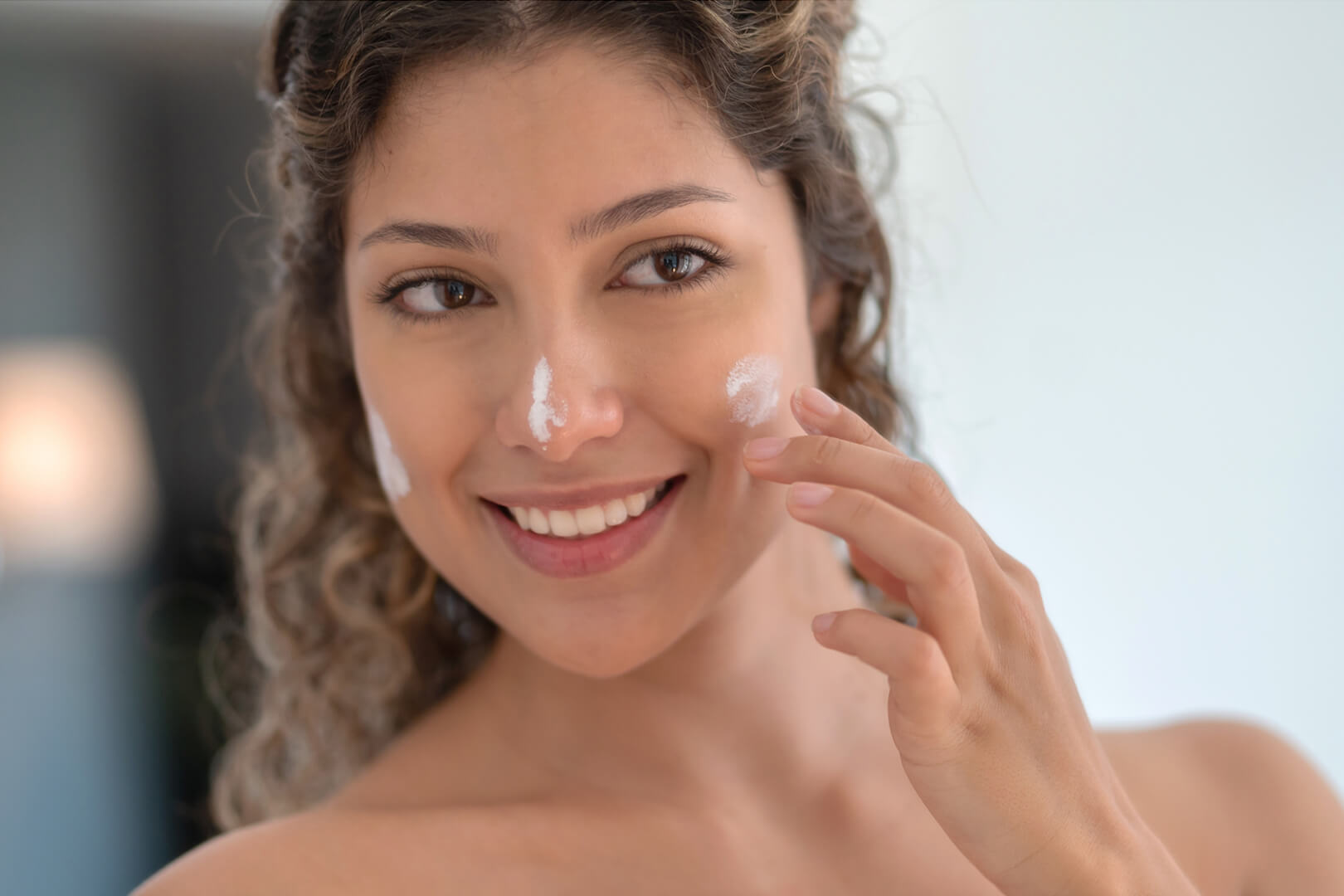
Proper Skin Care
Effective skin care plays a pivotal role in preventing milia. Regular exfoliation is key, as it helps in removing dead skin cells, thereby preventing them from getting trapped under the skin. Using gentle exfoliators like glycolic acid or salicylic acid can be beneficial. These acids promote cell turnover without harshly stripping the skin.
Moisturizing is essential, but choosing the right products is critical. Non-comedogenic moisturizers are recommended because they minimize pore clogging. Avoid heavy creams that might block skin pores. Keeping the skin clean and using a mild cleanser aids in preventing the buildup of debris.
Sun Protection
Exposure to the sun can damage the skin and contribute to milia formation. Protecting the skin from harmful UV rays is vital. Use a broad-spectrum sunscreen with at least SPF 30 daily, even on cloudy days. Applying sunscreen generously and reapplying every two hours is effective in reducing sun damage.
Wearing protective clothing like wide-brimmed hats or UV-blocking sunglasses adds another layer of defense. Avoiding peak sun intensity hours—usually between 10 am and 4 pm—can help in further protection. Keeping the skin shielded from harsh sun exposure helps maintain its health and prevent various skin issues, including milia.
Treatment Options for Milia
Milia are harmless, small white bumps that often disappear on their own. In cases where treatment is desired, various options are available to facilitate their removal.

At Home Treatments
- Gentle Cleansing: Daily washing with a mild soap and warm water can help manage milia, especially in infants. This practice keeps the skin clean and reduces the likelihood of further blockage.
- Exfoliation: Regular exfoliation using products containing ingredients like glycolic acid can aid in removing dead skin cells. Over-the-counter exfoliants might be beneficial but should be used cautiously on sensitive skin.
Professional Treatments
- Manual Extraction: Dermatologists or skincare professionals can perform manual extraction using sterile equipment to remove milia without causing damage to the surrounding skin.
- Chemical Peels: Superficial peels with ingredients such as salicylic acid might be used to remove the top layer of skin, thereby helping to clear milia. Caution is advised, however, as certain peels can cause milia as a side effect.
Milia might appear even when people follow regular skincare routines. Professional help is often effective but should be tailored to individual skin types and conditions.

